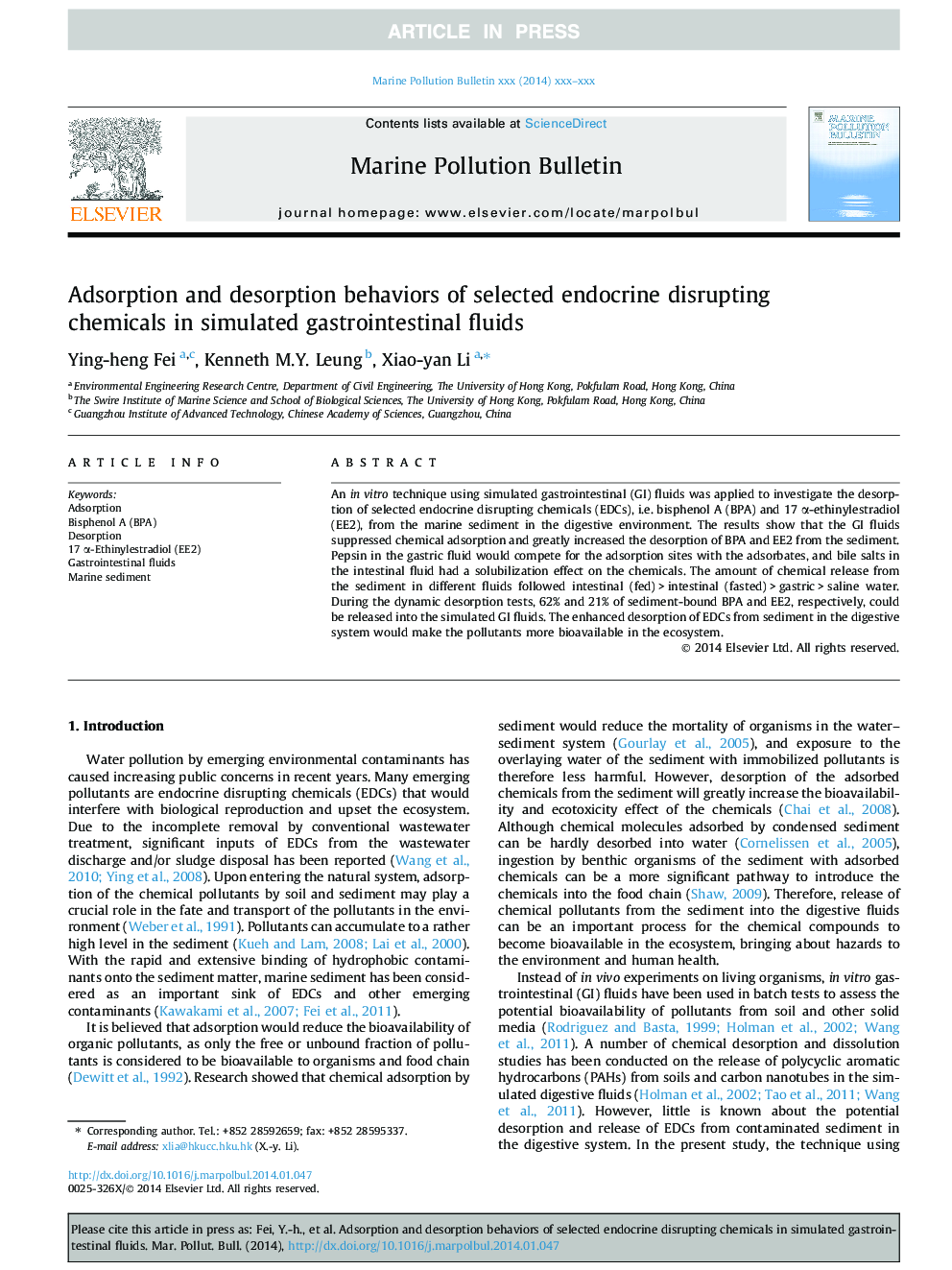| Article ID | Journal | Published Year | Pages | File Type |
|---|---|---|---|---|
| 6358443 | Marine Pollution Bulletin | 2014 | 7 Pages |
Abstract
An in vitro technique using simulated gastrointestinal (GI) fluids was applied to investigate the desorption of selected endocrine disrupting chemicals (EDCs), i.e. bisphenol A (BPA) and 17 α-ethinylestradiol (EE2), from the marine sediment in the digestive environment. The results show that the GI fluids suppressed chemical adsorption and greatly increased the desorption of BPA and EE2 from the sediment. Pepsin in the gastric fluid would compete for the adsorption sites with the adsorbates, and bile salts in the intestinal fluid had a solubilization effect on the chemicals. The amount of chemical release from the sediment in different fluids followed intestinal (fed) > intestinal (fasted) > gastric > saline water. During the dynamic desorption tests, 62% and 21% of sediment-bound BPA and EE2, respectively, could be released into the simulated GI fluids. The enhanced desorption of EDCs from sediment in the digestive system would make the pollutants more bioavailable in the ecosystem.
Related Topics
Physical Sciences and Engineering
Earth and Planetary Sciences
Oceanography
Authors
Ying-heng Fei, Kenneth M.Y. Leung, Xiao-yan Li,
